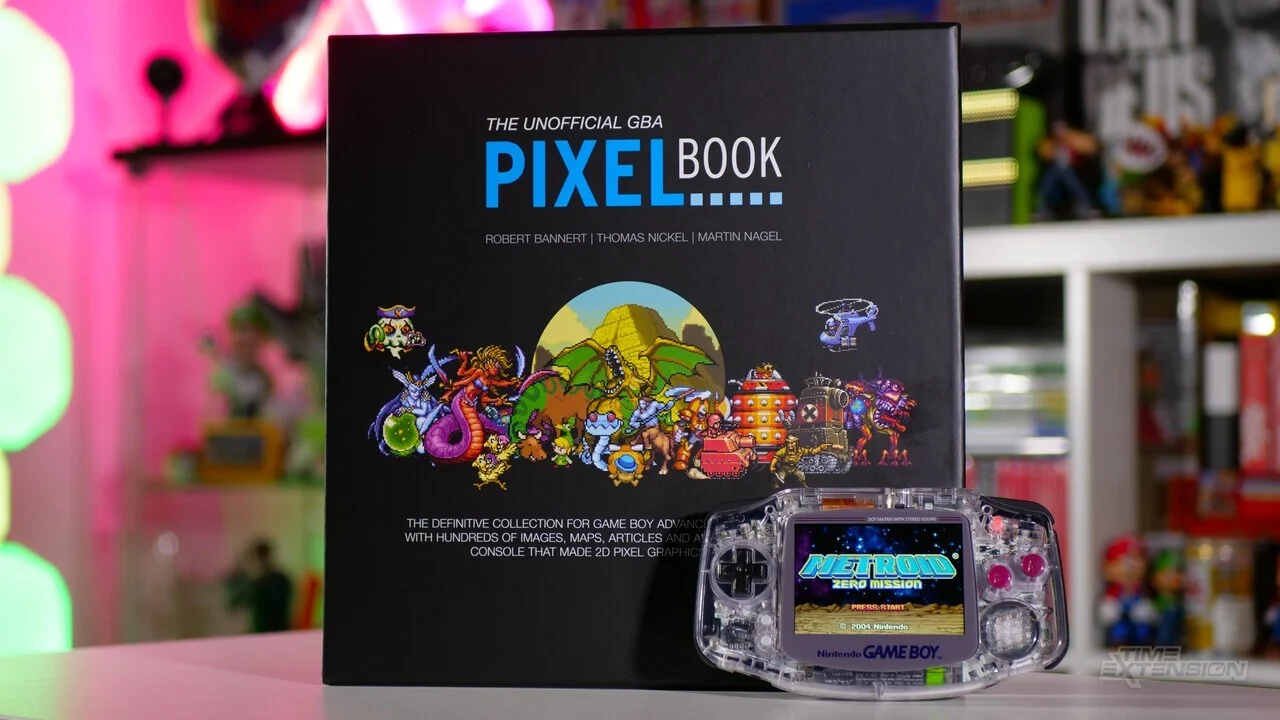Reviews
The GBA Pixel Book Review: A Journey into Retro Gaming Nostalgia

As someone who has been an avid gamer for as long as I can remember, the Game Boy Advance (GBA) holds a special place in my heart. The console’s innovative hardware, combined with a remarkable library of games, truly made it one of the defining handheld devices of its time. For fans like me who grew up playing it, the GBA Pixel Book represents a bridge between the past and present of gaming. This book not only celebrates the unique pixel art that defined the GBA but also delves into the stories and artistry behind the console’s most memorable games. In this GBA Pixel Book review, I’ll share my thoughts on why this resource is a must-have for anyone who has a deep appreciation for retro gaming and the legacy of the Game Boy Advance.
Celebrating the Visual Legacy of the GBA
The GBA was a revolution in portable gaming. At a time when mobile gaming was still finding its footing, it introduced a handheld device that was capable of handling graphics and gameplay on par with home consoles. But what really set it apart was the artistic direction many of its games took, thanks to its powerful pixel-based graphics. This book does an exceptional job of tracing the history and impact of pixel art on GBA games. Through its pages, I was able to see how the limitations of the hardware itself spurred incredible creativity. The book provides a detailed overview of how GBA developers worked around the system’s constraints, achieving stunning visuals despite the relatively low color palettes and screen resolution.
How Pixel Art Pushed the Boundaries of the GBA
What makes the GBA’s pixel art stand out is its ability to convey so much emotion and depth, despite the system’s technical limitations. Many of the games I played as a child, such as Metroid Fusion and Advance Wars, utilized pixel art not just as a style choice but as a way to make the best of the hardware’s modest capabilities. In the GBA Pixel Book, this concept is explored in detail, offering fascinating insight into how designers optimized the GBA’s visual assets. It highlights how developers used creative workarounds, like enhancing contrasts, adjusting lighting, and strategically limiting color use to create effects that were ahead of their time.
This section really made me reflect on how much the limitations of a system can encourage creative problem-solving. The book’s exploration of how these constraints led to beautiful, impactful games is one of its most captivating elements. As I read, I couldn’t help but think of how modern games, with all their high-tech graphics and extensive capabilities, sometimes fail to evoke the same nostalgic emotion as the pixel-based games of the GBA era.
The Evolution of GBA Games and Their Artistry
For many people, the GBA is synonymous with some of the best video game experiences of their lives. Titles like The Legend of Zelda: A Link to the Past and Pokémon FireRed offered gaming experiences that pushed the envelope in terms of gameplay, but what I found especially remarkable was the visual design. The GBA Pixel Book does an excellent job of tracing how the games on this system evolved, both in terms of gameplay and graphics. By focusing on the design of iconic games, the book showcases how these titles utilized the GBA’s capabilities to their fullest potential.
Exploring Iconic Games and Their Graphic Mastery
As someone who spent countless hours playing Castlevania: Aria of Sorrow, it was fascinating to read how the team behind it used pixel art to craft a game that remains visually striking even today. The GBA Pixel Book dedicates an entire section to this game, explaining how its developers made brilliant use of pixelation techniques to enhance the mood and atmosphere. The eerie setting of Aria of Sorrow wouldn’t have had the same impact without the expressive, atmospheric pixel art. I had never realized just how much effort went into creating these visuals until I read about the techniques and approaches used by the game’s artists.
In addition to Castlevania, the book also delves into other classics like Metroid Fusion and Fire Emblem: The Sacred Stones. Each game is analyzed not just in terms of gameplay, but how its pixel art design shaped the player’s experience. It was eye-opening to see how these games were carefully crafted, using the limited resources of the GBA to produce detailed and emotionally resonant visuals. It made me appreciate these games in a new light, especially knowing how much effort went into making them appear as beautiful as they did on a small, handheld screen.
Connecting the Past with the Present of Pixel Art
While the primary focus of the GBA Pixel Book is on the past, it also has a contemporary relevance. Today, pixel art continues to thrive in indie games and retro-inspired titles. Games like Shovel Knight and Celeste draw heavily on the visual style and techniques first honed on systems like the GBA. This continuity of style is something that the GBA Pixel Book touches on in a fascinating way. It explores how the foundation laid by the GBA’s pixel art has continued to influence modern developers, ensuring that this style isn’t just a relic of the past but a living, breathing art form.
The Enduring Influence of GBA Pixel Art
The book doesn’t just celebrate nostalgia; it shows how the pixel art of the GBA era laid the groundwork for the visual style of indie games today. One of the most interesting parts of the GBA Pixel Book is how it draws parallels between the technical challenges faced by early developers and the creative solutions that modern indie studios use to evoke the same charm. It’s evident that the spirit of GBA pixel art lives on in modern gaming, with many developers using pixel art to give their games a timeless quality that feels both familiar and fresh.
I couldn’t help but think about how the limitations of the GBA—small screen size, limited colors, and low resolution—forced developers to think creatively. In contrast, today’s developers have access to far more advanced technology. Yet, many choose to use pixel art because it’s a visual style that carries a sense of nostalgia and simplicity. The GBA Pixel Book does a wonderful job of connecting the dots between these two worlds, illustrating how the creativity of the past continues to shape the future of gaming.
Why the GBA Pixel Book is Essential for Retro Gamers
If you’re a fan of retro gaming, especially if you have a deep love for the GBA, then the GBA Pixel Book is a treasure trove of information, insights, and visual splendor. I found myself revisiting my old GBA games after reading through the book, appreciating the incredible craftsmanship that went into creating these pixel-perfect worlds. Whether you’re an experienced gamer or new to the GBA’s history, this book provides a comprehensive look at the artistry that defined a generation of handheld gaming.
The GBA Pixel Book review stands out because it is more than just a collection of facts about the GBA. It is a celebration of the console’s visual legacy and an exploration of how pixel art shaped the course of handheld gaming. If you’re looking for a deeper understanding of the GBA’s cultural significance and how its games still influence today’s gaming landscape, this book is an essential addition to your collection.
A Perfect Gift for Retro Gaming Fans
In conclusion, the GBA Pixel Book isn’t just a review of an old console’s art—it’s a celebration of how the Game Boy Advance and its games have influenced the world of gaming. For anyone who appreciates retro gaming, the pixel-perfect craftsmanship of the GBA era, or the history of handheld consoles, this book is a must-read. It’s an eye-opening journey that helps us understand how a generation of developers used pixel art to push the boundaries of what was possible on handheld systems. With every page, I was reminded of why the Game Boy Advance remains such an iconic and beloved console in the world of retro gaming.










